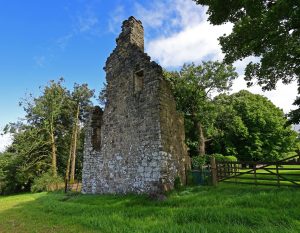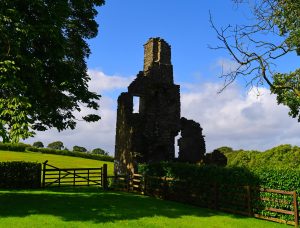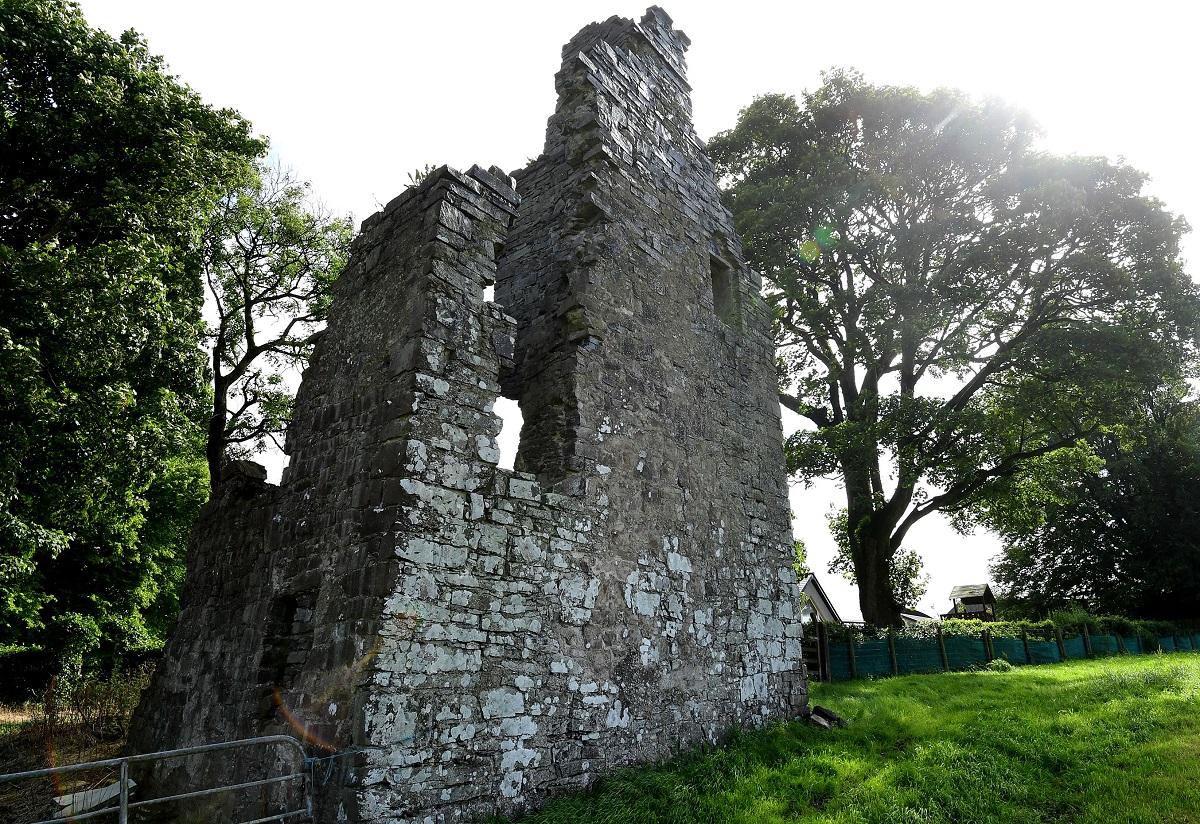A ruined castle near Trillick has a fascinating history threaded with the fate of the O’Neill clan, English settlers, and the turbulent political landscape of 17th century Ireland.
Its origins date back to the early 1600s and the Flight of the Earls.
The land was originally part of the vast holdings of the O’Neill clan, a powerful Gaelic family whose roots in the area ran deep for centuries before the arrival of the English.
In 1379, the O’Neills famously fought and won the Battle of Dreigh Hill against the Maguires, establishing the boundary between Tyrone and Fermanagh.
However, in 1607 the O’Neills, along with other Gaelic chieftains fled Ireland in hopes of securing support from the Spanish King in what became known as the Flight of the Earls.
They left behind their lands which were seized by the Crown and distributed to English and Scottish lords.
The land of Trillick was granted to Sir Mervyn Tuchet, the 4th Earl of Castlehaven, in 1611. He passed it to his cousin, Sir Henry Mervyn, and eventually, it came into the possession of Captain James Mervyn.
Upon his arrival in 1620, Captain Mervyn began constructing a grand castle on this land.
It is believed that an O’Neill structure, referred to only as the ‘Manor of Stowey,’ stood on the site before construction began.
By 1628, the new castle was completed. It was a three-story defended house with a fortified bawn, large windows on the ground floor, and a tall chimney stack.
Alongside the construction of the manor, the official town of Trillick was also being established. By 1630, Trillick had become a functioning town, complete with a court, a weekly market, and an annual fair held on May 3.

Occupied
The Mervyn family occupied the Trillick castle for nearly 200 years, with many of Captain James’s descendants taking roles in national politics. The family held the parliament seat for Tyrone for over 100 years, starting in 1639 and ending in 1747.
One of the major political powers of the family was Sir Audley Mervyn, a lawyer and MP for Tyrone in the mid 17th century. After his education in Oxford, he moved to Trillick to live with the Mervyn family at the castle, but he quickly gained fame through his military and political endeavours.
In 1640, he was commissioned as an officer in an army raised by the Lord Deputy of Ireland, Thomas Wentworth, a staunch supporter of King Charles I. That same year, Sir Audley was elected as an MP for Tyrone.
Despite his initial loyalty, Sir Audley soon turned against Wentworth, leading an attack on members of the Irish House of Commons who were allies of the Lord Deputy. Although the impeachment failed, Wentworth was arrested and executed the following year.
Sir Audley played a key role in these events, carrying the Irish Parliament’s Remonstrance against Wentworth to the English House of Commons.
Despite going against his military leader, Audley continued his army career for over 20 years, rising to the rank of colonel and he was appointed as the governor of Derry in 1644.
However, his appointment was short-lived, as he was withdrawn from the role on grounds of ‘immorality’. Following this, Sir Audley returned to England for a time before pursuing a career in law in Ulster. By 1658, he had entered the King’s Inn of Court, and in 1660, he was chosen as one of 12 commissioners from Tyrone to meet with King Charles II.
He was knighted and appointed as the Prime Serjeant of Ireland, the most senior legal post in Ulster at that time.

However, according to the Oxford Dictionary of Natural Biography, his reputation was marred by accusations of ‘corruption, a lack of scruples, and self-interest above principle.’
The Mervyn family remained at their Trillick castle until the early 18th century. In 1738, the Archdale family of Fermanagh acquired the property and took residence until they built the Archdale Manor House in 1773. After the Archdales moved to their new manor, the once-magnificent Trillick castle fell into disrepair. By 1814, it was officially declared vacant.
Today the site survives as a rectangular block 6.5 metres wide and 14 metres long, consisting of the remaining west gable wall and chimney stack.
The grounds, once meticulously maintained, are now overgrown.







